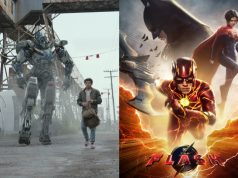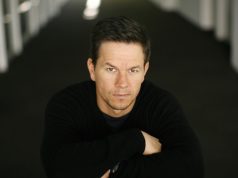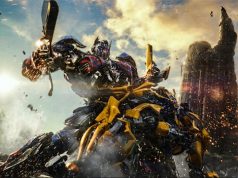In the latest addition to the “Transformers” franchise, director Michael Bay keeps the camera constantly moving and the editing lightning-quick because he knows that if that camera stops and lingers for even just a moment, the audience will have a chance to ask themselves, “Why do I care about these people?”
“Transformers: The Last Knight” is a noisy, frenetic, and action-filled movie that substitutes frenetic energy and noise for emotional depth.
The characters are constantly shouting — if not shouting, then they’re saying it as dramatically as possible — that the world is about to end.
The ruins of Cybertron, the home planets of the Transformers, is coming closer to Earth to destroy it, in order to be reborn. While the world faces imminent destruction, Cade Yaeger (Mark Walhberg) is protecting and keeping hidden the last remaining Autobots from a human task force dead set on capturing or destroying all Transformers on Earth.
But with the arrival of Cybertron, Cade Yaeger is made to partner up with a historian, Vivian Wembley (played by Laura Haddock), by Sir Edmund Burton (played by Anthony Hopkins). Burton is a part of a ancient society who has kept the secret of the Transformers from humanity al the way back to the dark ages. He knows of an artifact that only Cade and Vivian can find and use to stop Cybertron from destroying the planet.
The movie moves at breakneck speeds, with a large of cast of characters all talking loud and dramatically. The cast includes Autobots, Decepticons, military, scientists, and even a genius kid, who has taken Cade on as a father figure, and they are all throwing wisecracks and reminding everyone how dire the situation is and how everything is so important.
“Transformers: The Last Knight” never slows down for a moment. The camera never stays still. The visual style is all about capturing an explosion, a lens flare, a kick and a punch, people shouting, someone firing a gun, people running.
The cuts are so fast that it’s difficult to have any sense of topography with the scene. Most of the time, the characters shout out what they are doing and where they are going so that we understand why they seem to be moving in any direction at all.
“We have to blow up that gun or we won’t be able to move forward,” says a character because they seem to be stuck in cover under heavy fire. On another scene, as a large ship surfaces from underwater, another character says, “We have to climb up to get to out of here.”
And it needs to be said because we never really understand how they got there in the first place, where they are, and how they will survive from the wreckage.
Another fair question is why should we care but the characters also say it often. Phrases like, “You are the only one who can save the world” or “There is no victory without sacrifice.”
These platitudes are delivered with great earnestness but are completely undeserved because never does movie ever stop to make anything settle or sink in.
And my biggest peeve about this whole franchise is this absolute focus on Optimus Prime, the leader of the Autobots, and how, without him, the side of the good will never win.
Optimus Prime, for me, is one of the most one-dimensional characters I’ve ever seen, who is only good because he says so, and who must be powerful because everyone says he is and he always says his name before he makes a cool move.
“Transformers: The Last Knight” is just a messy, noisy, frenetic addition to a noisy and one-dimensional franchise. But considering how much it makes each time, there really seems to be no reason for Michael Bay and the rest of his creative team to even bother giving us any sort of emotional depth.
That’s one form the “Transformers” franchise can’t seem to transform into.









